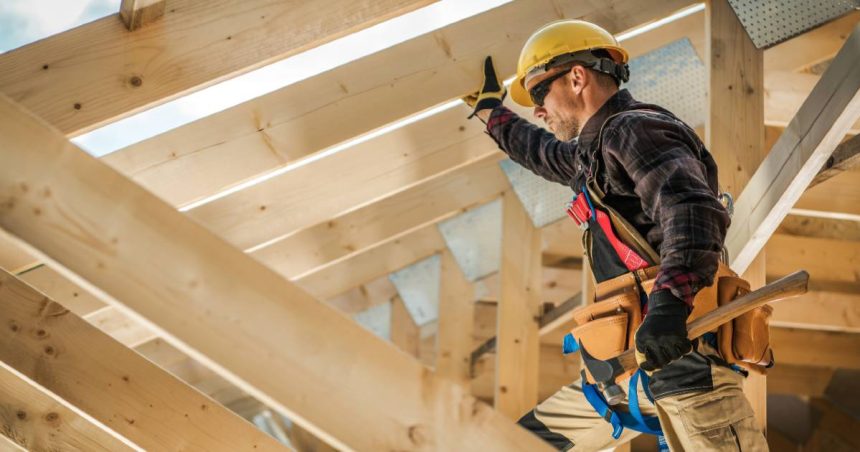Australia’s housing targets are teetering on unstable ground, with 83,000 more tradies needed to keep the nation’s home-building goals from total collapse.
A new report just released by the Housing Industry Association (HIA) has revealed that the country is unlikely to meet its ambitious Housing Accord targets unless it addresses its severe workforce shortfall.
The bold aim is to deliver 1.2 million new homes over the next five years to address the nation’s housing crisis – a goal the HIA warns will be unreachable without more tradies on the tools.
The report, titled All Hands on Deck, highlights the urgent need for skilled tradespeople across 12 key occupations, including carpenters, electricians, plumbers, and bricklayers, who play a crucial role in building homes for a rapidly growing population.
Its message serves as a wake-up call to policymakers and industry leaders, stressing the importance of immediate, coordinated action to ensure Australia’s construction industry is equipped to build the homes the nation needs.
According to the HIA report, the current residential building industry workforce of approximately 278,000 must grow by at least 30% if it is to have any chance of achieving the Accord targets.
HIA Executive Director Geordan Murray says achieving these goals is critical to meeting national housing demand and alleviating cost pressures.
“It will not happen without a significant increase in the construction trades workforce,” Mr Murray warns.
“Achieving the Housing Accord’s target will require an annual average of 240,000 homes—a level that has only been reached twice in our history.”
“This means a significant boost in the number of chippies, sparkies, plumbers, brickies, and concreters, to get these much-needed homes out of the ground and to lock up.”
The report breaks down the additional workforce required across the major trades to achieve the housing targets by its 2030 deadline.
The numbers highlight the scale of critical shortage in core trades that the housing industry depends on, with five trade occupations alone accounting for more than 63,000 of the additional workers required alone.
Tradies required across key sectors
- Carpenters: 73,399 currently employed – 22,020 more needed
- Electricians: 57,723 currently employed – 17,317 more needed
- Plumbers: 39,663 currently employed – 11,899 more needed
- Painters: 26,774 currently employed – 8,032 more needed
- Bricklayers: 15,059 currently employed – 4,518 more needed
- Other sectors: – 20,000 needed.
Building up Australia’s trade industries
Finding those additional 83,000 tradies will require a combination of strategies to recruit, train, employ and keep more skilled workers.
Failure to do so will result in the home construction sector facing further rising costs, delays, and even failure to meet demand, putting additional strain on housing affordability and worsening the housing crisis.
Apprentice Training
The HIA emphasises that the primary strategy to address this shortage should be additional investment in apprentice training opportunities for young Australians.
Presently, 114,000 apprentices are training across the residential building trades.

However, reaching the necessary workforce size within five years would mean nearly doubling this number, a challenge HIA’s report describes as “implausible” under current conditions.
“Creating career opportunities for the local workforce should be a priority, but this alone will not solve the tradie shortage,” Mr Murray says.
The HIA also advises governments to work with the industry to promote construction careers to a broader audience, including older workers, women, and culturally diverse communities, who may benefit from additional support and financial assistance to succeed in trades.
Skilled Migration
The HIA suggests more support for skilled migration to bridge the immediate gap and provide a practical short-term solution to ensure the nation doesn’t fall further behind build targets.
“Skilled migration is the other lever the government can pull in the short term to address the immediate shortage of tradies,” Mr Murray says.
Australia’s temporary skilled worker visa system currently accounts for less than 1% of the workforce in trade occupations, which falls far short of what is needed.
The report recommends streamlining immigration pathways for skilled tradespeople and establishing a dedicated construction trade contractor visa to attract foreign talent quickly.
Worker Retention
To ensure that the construction industry remains sustainable in the long term, initiatives will be needed to encourage current tradespeople to stay in the industry while attracting new workers.
The key strategies to achieve this include industry-based mentoring and training programs to boost retention among younger cohorts and incentives for experienced tradespeople to train newcomers.
Furthermore, to address the aging workforce in certain trades like bricklaying and plastering, the report advises targeted campaigns to attract younger talent into these specific fields.
Murray says traditional approaches are no longer sufficient, and the situation calls for an “all hands on deck.” approach.
“The time for business-as-usual solutions has passed, and we need coordinated government actions to address these chronic tradie skills shortages,” he said.







